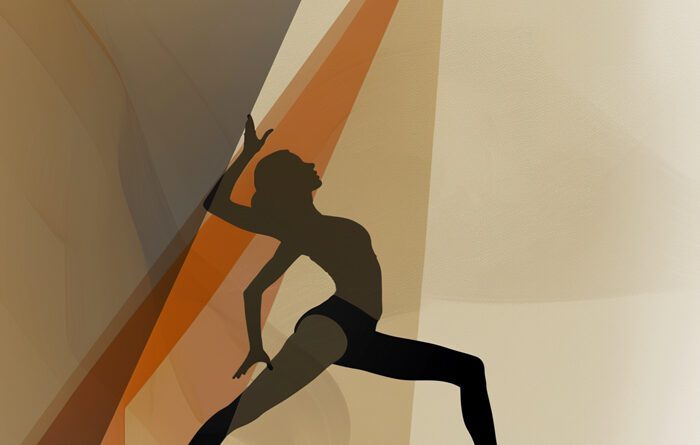Looking to achieve deep relaxation? Look no further than the Legs-Up-The-Wall Pose, also known as Viparita Karani. As a yoga instructor specializing in working with beginners, I can assure you that this pose is perfect for anyone seeking a rejuvenating experience. By simply lying on your back with your legs extended up against a wall, you can effortlessly release tension from your body and calm your mind. Whether you’re looking to unwind after a long day, reduce stress, or improve sleep quality, the Legs-Up-The-Wall Pose is a simple yet effective practice that can bring you the utmost relaxation. So, grab a cozy spot near a wall and get ready to rejuvenate your body and mind with this deeply relaxing pose.
Benefits of Legs-Up-The-Wall Pose
Legs-Up-The-Wall Pose, also known as Viparita Karani, is a simple yet powerful yoga pose that offers a range of benefits for both the body and mind. By incorporating this pose into your yoga practice, you can achieve deep relaxation and experience a sense of calmness and rejuvenation. Let’s explore some of the key benefits that Legs-Up-The-Wall Pose offers:
Relieves stress and anxiety
In today’s fast-paced world, stress and anxiety have become all too common. Legs-Up-The-Wall Pose provides a potent tool to help alleviate these feelings. By placing your legs up against the wall, you activate the parasympathetic nervous system, which is responsible for the body’s rest and digest response. This shift in the nervous system helps to calm the mind, reduce stress, and promote a sense of tranquility.
Improves circulation
One of the amazing benefits of Legs-Up-The-Wall Pose is its ability to improve circulation throughout the body. When you elevate your legs in this pose, you assist in the return of blood flow from the lower extremities back to the heart. This can be especially beneficial for individuals who spend long periods of time sitting or standing, as it helps to reduce swelling and discomfort in the legs and feet.
Reduces swelling and inflammation
If you often experience leg and ankle swelling, Legs-Up-The-Wall Pose can be a game-changer for you. By raising your legs above the heart, you promote lymphatic drainage, which helps to reduce swelling and inflammation. This can be particularly helpful for individuals with conditions such as lymphedema or varicose veins.
Promotes relaxation
Legs-Up-The-Wall Pose is known for its ability to induce a deep state of relaxation. By lying with your legs up against the wall, you encourage the release of tension and stress from the entire body, promoting a sense of calmness and tranquility. This pose is particularly beneficial for those who struggle with insomnia or have difficulty winding down after a busy day.
Soothes tired legs and feet
If you spend long hours on your feet or engage in activities that put strain on your lower body, Legs-Up-The-Wall Pose can provide much-needed relief. By elevating your legs, this pose helps to soothe tired muscles, reduce fatigue, and alleviate any discomfort or pain in the legs and feet. It can be a wonderful practice to incorporate after a long day or an intense workout.
Preparation for Legs-Up-The-Wall Pose
Before you begin practicing Legs-Up-The-Wall Pose, it’s important to prepare yourself and create a suitable environment for maximum comfort and relaxation. Here are some steps you can take to ensure a safe and enjoyable practice:
Find a clear wall space
Choose a location in your home or yoga studio where you have ample space to lie down with your legs extended against the wall. Make sure the area is free from any obstacles or distractions to create a peaceful atmosphere.
Use a folded blanket or bolster for support
To enhance your comfort in this pose, you can place a folded blanket or bolster under your hips or lower back. This will provide support and promotion for alignment.
Remove any restrictive clothing or accessories
Before you begin, it’s recommended to remove any tight or restrictive clothing that may hinder your movement or restrict blood flow. Take off your shoes, socks, and any jewelry that may cause discomfort.
Place props within reach
If you plan on using any additional props, such as an eye pillow or a small pillow for neck support, make sure to have them within reach before you start the pose. This will allow you to easily access them when needed, without interrupting your relaxation.
Step-by-Step Guide to Legs-Up-The-Wall Pose
Now that you have prepared yourself and your space, let’s go through a step-by-step guide to practicing Legs-Up-The-Wall Pose:
1. Sit sideways with your hip against the wall
Position yourself next to the wall, and sit on the floor with your side hip touching the wall. Gently swing your legs up the wall as you lower your upper body towards the ground.
2. Lay down on your back and swing your legs up the wall
Once you are in a comfortable seated position, carefully lie down on your back and swing your legs up the wall. Your sitting bones should be as close to the wall as possible, with your legs extended vertically along the wall.
3. Adjust your position for comfort
Take a moment to adjust your body position to find the most comfortable and relaxing alignment. You can experiment with the distance of your hips from the wall and the angle of your legs to find what feels best for you.
4. Extend your arms to the sides or rest them on your belly
Extend your arms out to the sides, palms facing up, or rest your hands on your belly. Find a position for your arms that feels natural and allows you to fully relax.
5. Close your eyes and relax
With your legs extended up the wall and your body settled into a comfortable position, gently close your eyes and turn your attention inward. Take deep, slow breaths, allowing any tension or stress to melt away with each exhale. Continue to relax in this pose for 5-15 minutes, or as long as feels comfortable for you.
Modifications and Variations of Legs-Up-The-Wall Pose
As with any yoga pose, it’s important to listen to your body and make adjustments as needed. Here are some modifications and variations to consider:
Using props for extra support
If you find that holding your legs up against the wall is challenging, you can use props such as folded blankets, blocks, or bolsters under your hips or lower back for additional support. This can help to alleviate any strain or discomfort in the lower body.
Bending the knees for tight hamstrings
If you have tight hamstrings or limited flexibility in the back of your legs, you can modify the pose by bending your knees slightly. This will allow you to find a more accessible position and still receive the benefits of the pose.
Adding a twist for spinal release
To further enhance the benefits of Legs-Up-The-Wall Pose, you can incorporate a gentle twist. While in the pose, slowly drop your knees to one side and turn your head in the opposite direction. This gentle spinal twist can help release tension and promote a deeper sense of relaxation.
Practicing with a partner for deeper relaxation
If you have a yoga partner or friend who is also interested in practicing Legs-Up-The-Wall Pose, you can take turns assisting each other in the pose. One person can gently press down on the legs of the other, providing a gentle traction and deepening the stretch. This can be a wonderful way to enhance relaxation and bonding.
Guidelines for Practicing Legs-Up-The-Wall Pose
To ensure a safe and effective practice of Legs-Up-The-Wall Pose, it’s important to keep the following guidelines in mind:
Listen to your body and work within your limits
Every body is unique, and what feels comfortable or accessible for one person may be different for another. It’s essential to listen to your body and respect its limits. If any pose or variation causes pain or discomfort, modify or skip it altogether.
Breathe deeply and fully
Throughout your practice of Legs-Up-The-Wall Pose, focus on deep, slow breathing. Inhale deeply, expanding your belly, ribcage, and chest. Exhale fully, allowing any tension to release with each breath. Conscious breathing will enhance the relaxation response and bring a sense of calmness to your mind and body.
Hold the pose for 5-15 minutes
Legs-Up-The-Wall Pose is most beneficial when held for an extended period of time. Aim to stay in the pose for at least 5 minutes, gradually working up to 15 minutes or longer. This allows your body to fully relax and reap the maximum benefits of the pose.
Release slowly and mindfully
When you’re ready to come out of the pose, take your time and release slowly and mindfully. Bend your knees, roll to one side, and use your arms to gently push yourself up to a seated position. Avoid any sudden movements or rushing, and take a moment to notice how your body feels after the practice.
Practice regularly for best results
To experience the full benefits of Legs-Up-The-Wall Pose, it’s recommended to incorporate it into your regular yoga practice. Aim to practice this pose at least a few times per week, or as often as feels comfortable for you. Consistency is key in reaping the rewards of deep relaxation and rejuvenation.
Tips for Deepening Your Relaxation in Legs-Up-The-Wall Pose
While Legs-Up-The-Wall Pose alone provides a deeply relaxing experience, you can further enhance your relaxation by incorporating these tips:
Try relaxation techniques like visualization or breathwork
As you relax in Legs-Up-The-Wall Pose, you can experiment with different relaxation techniques to deepen your experience. Visualization involves mentally creating calming images or scenes in your mind, while breathwork focuses on specific breathing patterns to induce relaxation. Explore these techniques and find what works best for you.
Use essential oils or aromatherapy for a sensory experience
Aromatherapy can be a wonderful addition to your Legs-Up-The-Wall Pose practice. Before you begin, you can use a diffuser or apply a few drops of your favorite essential oil to your wrists or temples. Lavender, chamomile, and ylang-ylang are known for their calming properties and can help enhance relaxation.
Play calming music or nature sounds
Create a soothing ambiance by playing soft, calming music or nature sounds in the background. Gentle instrumental music or recordings of ocean waves or bird songs can be particularly effective in promoting a peaceful atmosphere for your practice.
Create a peaceful atmosphere with dim lighting and soft blankets
To enhance your relaxation, dim the lights in the room or light a few candles. Soft, warm lighting can create a serene environment that promotes a sense of tranquility. You can also drape a soft blanket over your body for added warmth and comfort.
Variations for Different Levels of Flexibility
Legs-Up-The-Wall Pose can be modified to accommodate individuals with different levels of flexibility. Here are some variations to consider:
Using a chair or prop to elevate the hips
If you find it challenging to get your hips close to the wall, you can use a chair or prop to elevate your hips. Place the chair or prop a comfortable distance away from the wall and rest your hips on it. Extend your legs vertically against the wall and allow the prop to support your hips.
Using a bolster or block under the hips
For individuals who need extra support or prefer a gentler variation, you can place a bolster or block under your hips. This will elevate your pelvis and create a slight inversion even if your legs are not fully extended against the wall. Experiment with different heights to find what feels comfortable for you.
Using a strap or belt to support the legs
If you have limited flexibility in your hamstrings or find it challenging to keep your legs extended against the wall, you can use a strap or belt to support your legs. Simply loop the strap around your feet and hold onto the ends with your hands. This will help to maintain the position while reducing strain on the legs and lower back.
Common Mistakes to Avoid in Legs-Up-The-Wall Pose
To ensure a safe and effective practice of Legs-Up-The-Wall Pose, it’s important to avoid the following common mistakes:
Don’t force your legs straight if you feel discomfort
While it’s ideal to have your legs fully extended against the wall in this pose, don’t force them straight if you feel any discomfort or strain. Every body is different, and you may need to bend your knees slightly or adjust the angle of your legs to find a comfortable position.
Avoid straining the neck or shoulders
Maintain a relaxed and neutral position in your neck and shoulders throughout the pose. Avoid any excessive tension or strain in these areas. If you feel discomfort, you can use a small pillow or folded blanket under your head and neck for support.
Don’t hold your breath, remember to breathe deeply
It’s vital to pay attention to your breath during Legs-Up-The-Wall Pose. Avoid holding your breath or shallow breathing. Instead, consciously breathe deeply and fully, allowing the breath to flow naturally and deeply into your belly and chest. This will help to activate the relaxation response and promote a deeper sense of calmness.
Avoid practicing with a full stomach
To prevent any discomfort or interference with digestion, it’s advisable to avoid practicing Legs-Up-The-Wall Pose immediately after a meal. Give yourself at least 1-2 hours to digest before engaging in this pose. Practicing on an empty stomach or with a light snack is ideal.
FAQs about Legs-Up-The-Wall Pose
Here are some frequently asked questions about Legs-Up-The-Wall Pose:
Can I practice this pose during menstruation?
Yes, Legs-Up-The-Wall Pose is safe to practice during menstruation and can be particularly beneficial for providing relief from menstrual cramps and discomfort. However, listen to your body and adjust the pose as needed. You can use additional support with props and experiment with a wider or narrower leg position.
Is it safe to do this pose during pregnancy?
Legs-Up-The-Wall Pose is generally considered safe during pregnancy, especially during the first and second trimesters. However, it’s essential to consult with your healthcare provider before practicing this pose. If you experience any discomfort or signs of strain, modify the pose as needed or seek guidance from a prenatal yoga instructor.
Can I practice if I have a knee or hip injury?
If you have a knee or hip injury, it’s advisable to consult with your healthcare provider or a qualified yoga instructor before practicing Legs-Up-The-Wall Pose. They can assess your condition and provide modifications or alternative poses that are more suitable and supportive for your needs.
How often should I do Legs-Up-The-Wall Pose?
The frequency of practicing Legs-Up-The-Wall Pose depends on your individual needs and schedule. Ideally, aim to incorporate this pose into your yoga practice at least a few times per week. However, you can adjust the frequency based on your time availability and what feels comfortable for your body. Consistency is key to experiencing the full benefits of this pose.
Conclusion
Legs-Up-The-Wall Pose, also known as Viparita Karani, is a simple yet powerful pose that offers a myriad of benefits for your physical and mental well-being. By incorporating this pose into your regular yoga practice, you can achieve deep relaxation, relieve stress and anxiety, improve circulation, reduce swelling and inflammation, and soothe tired legs and feet. Take the time to explore different variations and modifications that work best for your body, and start experiencing the rejuvenating effects of Legs-Up-The-Wall Pose today!







